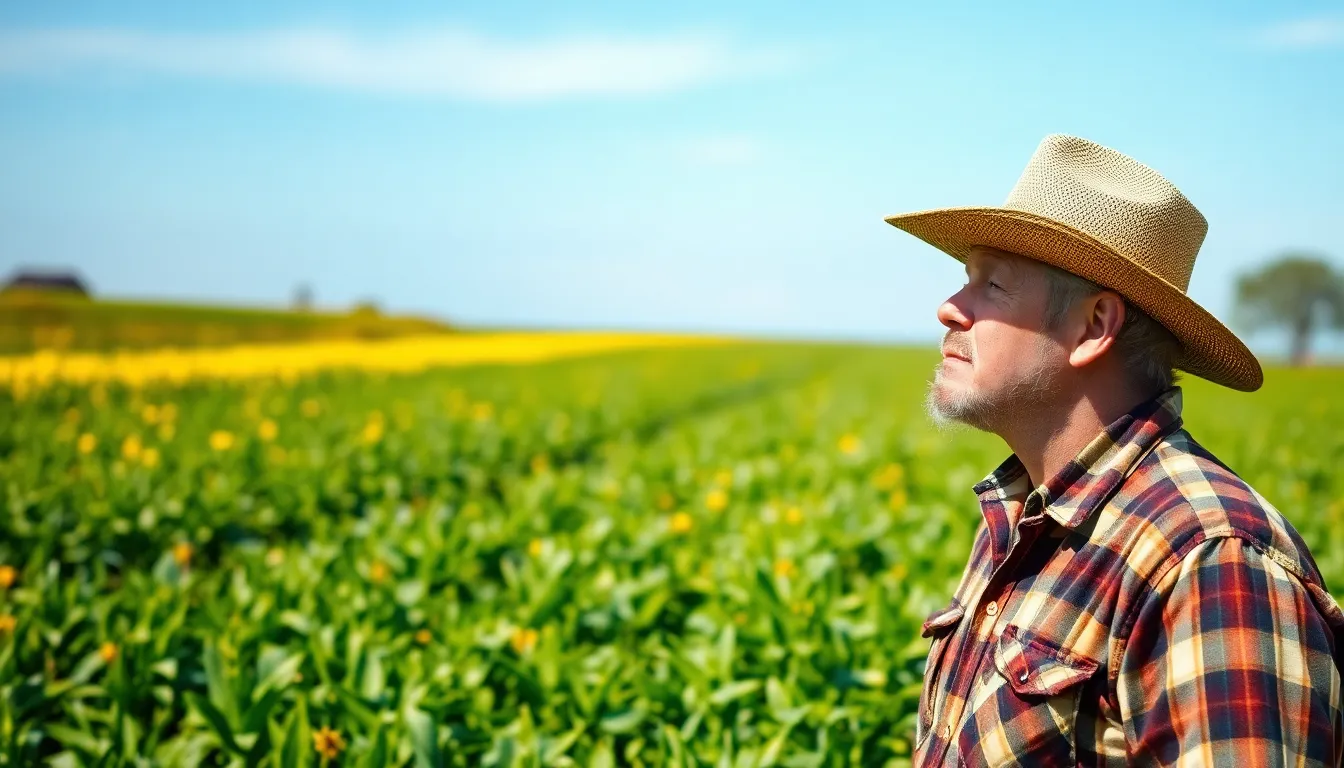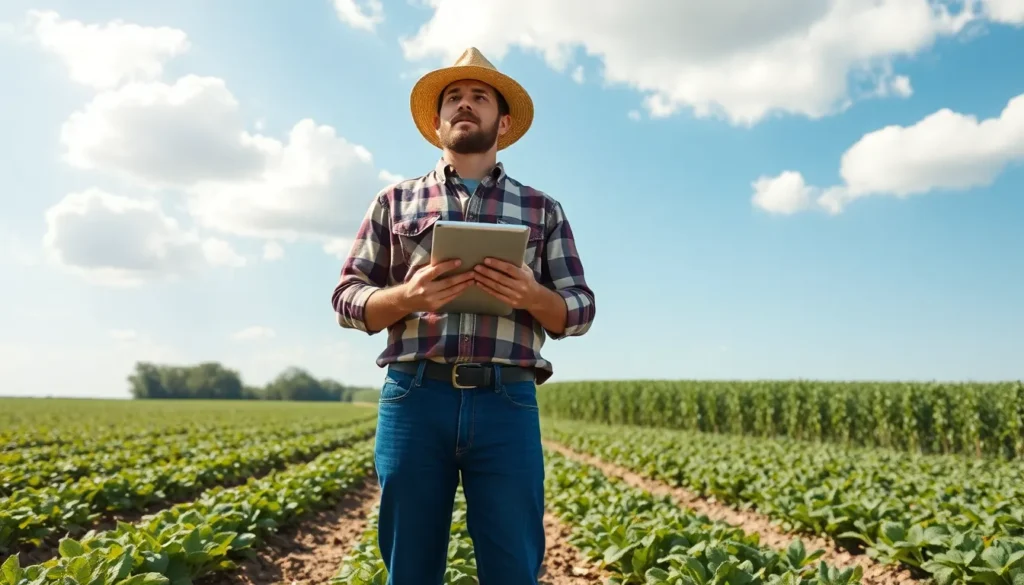Table of Contents
ToggleAs farmers gear up for another growing season, the 2025 Farmers’ Almanac is here to deliver its much-anticipated weather predictions. This trusty tome has been a staple for generations, providing insights that help farmers—and anyone with a garden—plan their activities around Mother Nature’s whims. Whether it’s predicting an early frost or an unexpected heatwave, the Almanac’s forecasts can be as crucial as knowing when to plant those tomatoes.
Overview of Farmers Almanac
Farmers’ Almanac is a time-honored publication, known for its weather forecasts and gardening advice. Founded in 1818, it has established a reputation for providing reliable and long-term weather predictions. The Almanac relies on a combination of historical weather patterns, solar cycles, and atmospheric conditions to generate its forecasts.
The 2025 edition integrates advanced meteorological techniques, offering insights that assist farmers and gardeners in planning their activities effectively. It includes detailed predictions on critical events, such as frost dates, seasonal temperature fluctuations, and precipitation patterns. Each year, readers anticipate the Almanac’s unique weather outlook, charting expectations for a variety of climate conditions.
In addition to weather forecasts, the Farmers’ Almanac contains articles on gardening tips, recipes, and home remedies. This rich variety adds value to its core mission as a weather guide, appealing to a broad audience interested in agricultural practices and sustainable living.
Readers appreciate the Almanac’s insight into regional weather variances. For instance, the predictions often elucidate specific conditions for different areas across the United States. By detailing temperature variations and precipitation levels, the publication empowers local farmers and gardening enthusiasts to tailor their strategies accordingly.
As the 2025 predictions unfold, the Farmers’ Almanac continues to be an essential resource, reinforcing its significance within the agricultural community. Its blend of tradition and modern forecasting techniques keeps it relevant and reliable for those relying on nature’s rhythms.
Key Features of the 2025 Predictions

The 2025 Farmers’ Almanac features valuable insights into weather events affecting agriculture and gardening. It emphasizes user-friendly predictions tailored to support farmers and gardening enthusiasts alike.
Long-Term Forecast Methodology
Long-term forecasts rely on various climatic conditions and historical weather data. The Farmers’ Almanac uses solar cycles and atmospheric patterns to enhance accuracy. A combination of time-tested calculations and modern meteorological techniques informs these predictions. By analyzing past climate data, the Almanac anticipates significant weather events like frost and heat waves, delivering reliable forecasts to the agricultural community.
Geographic Coverage
Geographic coverage spans the entire United States and parts of Canada. The Almanac tailors predictions to specific regional climates, considering local variations in weather patterns. Each region benefits from detailed forecasts that enhance the relevance of information for local farmers. This localized approach helps readers adapt their strategies for different agricultural areas. Regional insights empower users to make informed decisions that align with the unique characteristics of their growing environments.
Seasonal Predictions for 2025
The 2025 Farmers’ Almanac presents detailed seasonal forecasts to guide farmers and gardeners alike.
Winter Forecast
Winter brings colder conditions across much of the United States, with below-average temperatures expected in many regions. Significant snowfall is projected for the Northeast, likely impacting planting schedules later in the spring. Conversely, parts of the Southwest might experience milder temperatures and drier weather. Those in the Midwest should prepare for frequent snow events. With these predictions, farmers should adjust their winter preparations accordingly.
Spring Forecast
Spring shows signs of variability, featuring fluctuating temperatures. The Southeast anticipates above-average warmth, fostering an early start for agricultural activities. Meanwhile, the northern states may encounter lingering cold spells, potentially delaying planting times. Rainfall patterns indicate a wet spring for the Midwest, enhancing soil moisture levels. These dynamic conditions require careful planning to maximize crop yields.
Summer Forecast
Summer forecasts suggest above-average temperatures nationwide, particularly in the South, where heatwaves may occur. Increased humidity levels are likely, influencing crop evaporation rates. The Northeast might face occasional storms, providing much-needed relief to farmers. Predictions indicate regions like the Plains could experience drought conditions, stressing early irrigation needs. Adapting strategies for heat management becomes essential during this period.
Fall Forecast
Fall presents a mix of warmer conditions, alongside a potential increase in rainfall for the Lower Midwest. These weather changes could prolong the growing season, benefiting late-harvest crops. The Northern Plains may experience early frosts, signaling farmers to prepare for an earlier end to the season. Farmers in the Northeast should brace for a higher likelihood of storm events, which might disrupt harvest activities. Adjusting harvest schedules according to these predictions will be vital.
Implications of the Predictions
Farmers’ Almanac’s 2025 weather predictions carry significant implications for various sectors, especially agriculture and community planning.
Impact on Agriculture
Altered weather conditions directly influence crop management decisions for farmers. Extended frost-free periods can promote earlier planting, boosting yields for early-season crops. Increased temperatures combined with potential drought in the Plains necessitate efficient water usage and irrigation strategies. Seasonal forecasts affecting when to cultivate various crops can help mitigate losses. Planning harvest schedules according to precipitation patterns lowers risks associated with unexpected weather events. Growth in local food systems also relies on accurate predictions, enabling farmers to adjust offerings based on anticipated conditions.
Community Planning and Preparedness
Local communities benefit from the 2025 predictions through improved preparedness measures. Understanding potential weather events helps local agencies allocate resources effectively for disaster response efforts. Anticipated rainfall levels can influence infrastructure maintenance and emergency services readiness. Education programs on sustainable practices can empower citizens to adapt to climate-related challenges. Seasonal predictions serve as a foundation for community outreach initiatives focused on gardening and local agriculture. When community members stay informed, they strengthen resilience against weather-related impacts.
The 2025 Farmers’ Almanac stands as a crucial tool for farmers and gardeners alike. With its blend of traditional methods and modern meteorological techniques, it offers valuable insights that can significantly impact agricultural practices. By understanding upcoming weather patterns and seasonal forecasts, individuals can make informed decisions about planting and harvesting schedules.
The localized predictions ensure that each region receives tailored information, enhancing the relevance of the forecasts. As communities prepare for the challenges posed by changing weather conditions, the Almanac continues to play an essential role in promoting resilience and sustainability in agriculture. Embracing these predictions can lead to better preparedness and resource management for all.




